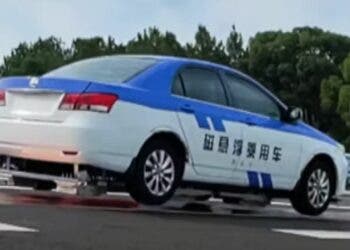Just 15 minutes in a car makes us sleepier, affecting our ability to drive. After 30 minutes, this effect has a “significant impact on your ability to stay concentrated and alert,” researchers warn.

According to a new paper published by researchers from RMIT University in Melbourne, Australia, cars themselves may be a significant threat against our ability to drive safely — some 20% of fatal car accidents today involve driver fatigue, they explain, and, according to their research, the vibrations we experience in cars makes us sleepier, posing a major risk for motorists everywhere.
Snooze cruise
“We know 1 in 5 Australians have fallen asleep at the wheel and we know that drowsy driving is a significant issue for road safety,” said Professor Stephen Robinson, paper co-author. “When you’re tired, it doesn’t take much to start nodding off and we’ve found that the gentle vibrations made by car seats as you drive can lull your brain and body.
The team worked with 15 volunteers who were placed in a virtual driving simulator. The test pitted each participant against a monotonous, two-lane highway. It wasn’t the actual driving experience that was central to this experiment, however — what the team wanted to see was what effect car vibrations have on the volunteers’ alertness levels.
The simulator was installed on a platform that could vibrate on different frequencies. Each volunteer was tested twice, using the same 60-minute driving scenario, once with vibrations at low frequencies (4-7 Hz, the same range you’d experience in a car) and once with no vibrations (as a control test).
To gauge participants’ alertness, the team monitored their heartbeat. The researchers explain that tiredness induced by vibration makes it harder, both psychologically and physiologically, for people to perform mental tasks. In order to compensate, the body’s sympathetic nervous system alters the rate with which our hearts beat. So, by looking at each volunteer’s heart rate variability (HRV), researchers were able to gain an objective measure of how drowsy they were feeling as the test progressed.

Image credits RMIT University.
During the vibrating test, volunteers started showing signs of drowsiness roughly 15 minutes in. By the 30 minute mark, they showed significant drowsiness and required substantial effort to maintain alertness and cognitive performance. The effect was progressively stronger as the test drew on, peaking at 60 minutes.
Co-author Mohammad Fard, an Associate Professor at RMIT, said that the results warrant further research into the effect of these vibrations on people. One of the first areas that should be investigated is whether their effect is consistent across different demographics, he adds — as the current experiment used a relatively tiny sample size.
“We want to study a larger cohort, particularly to investigate how age may affect someone’s vulnerability to vibration-induced drowsiness as well as the impact of health problems such as sleep apnea,” he said. “Our research also suggests that vibrations at some frequencies may have the opposite effect and help keep people awake.
“So we also want to examine a wider range of frequencies, to inform car designs that could potentially harness those ‘good vibrations’.”
“To improve road safety, we hope that future car seat designs can build in features that disrupt this lulling effect and fight vibration-induced sleepiness,” added Robinson.
The paper “The Effects of Physical Vibration on Heart Rate Variability as a Measure of Drowsiness,” has been published in the journal Ergonomics.






